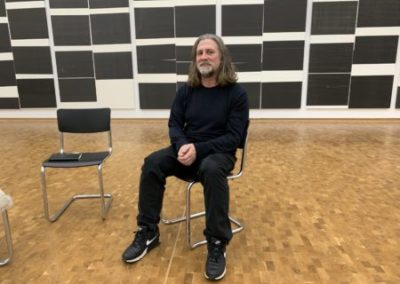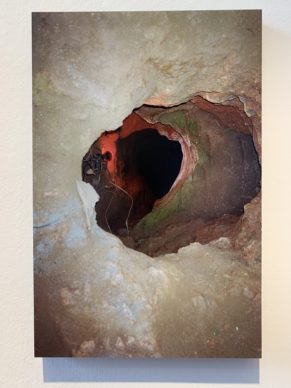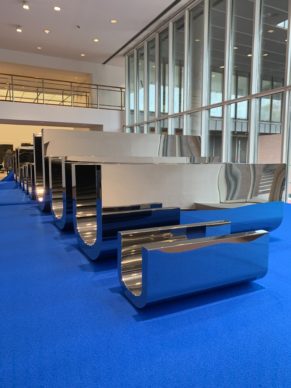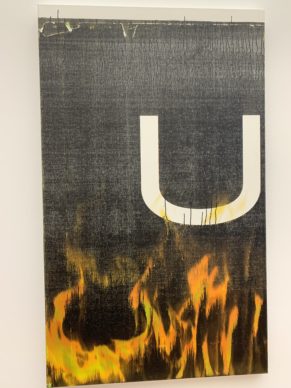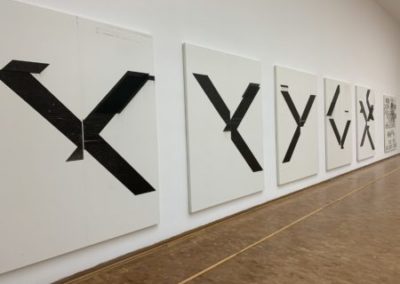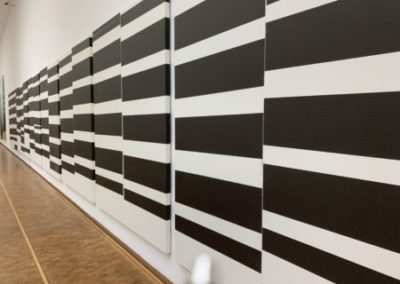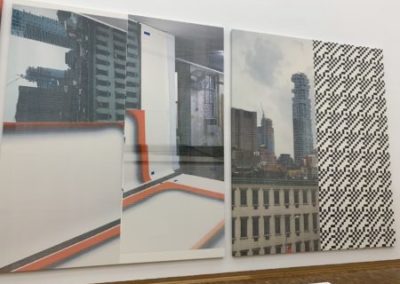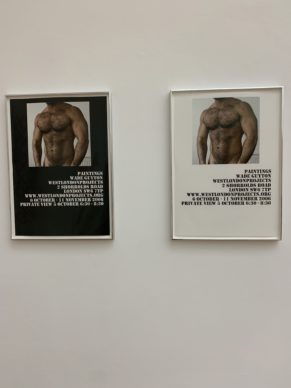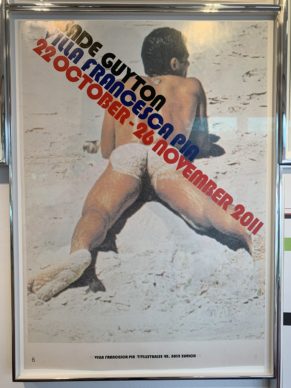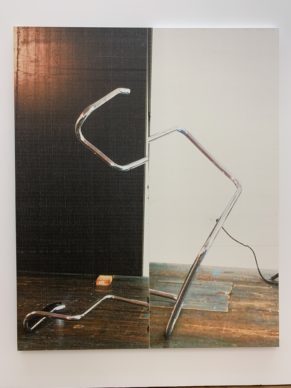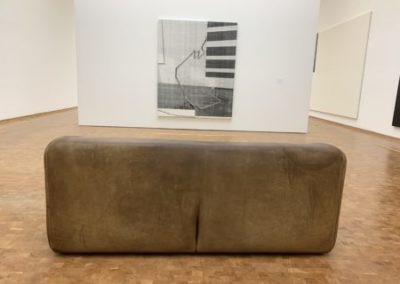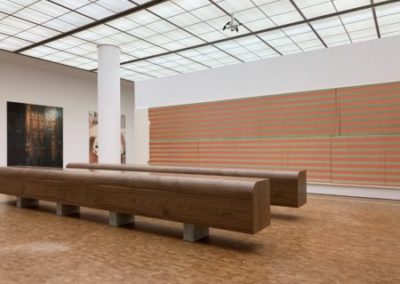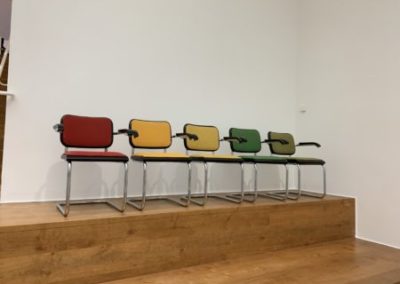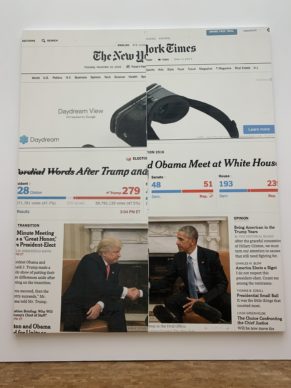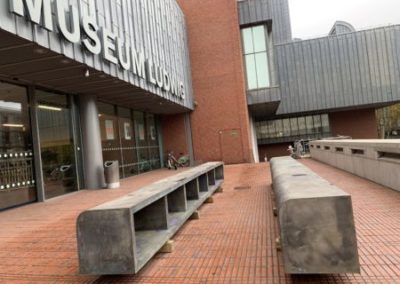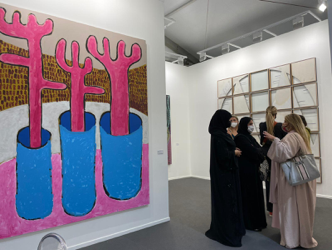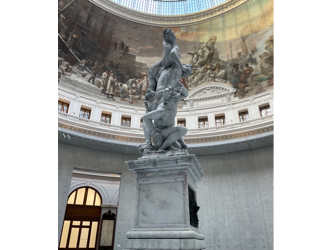USA as China
We are living through an age of dispersal and multiplicity. There’s no longer a global centre for art and it may well be the case that the United States is as rich a melting pot in this respect as China, for example. Nor is there a single prevailing school or genre in 2019 to render all others obsolete.
Figuration and abstraction
This is already a period when we’ve seen artists simultaneously practising figuration and abstraction, photography and painting, and video and installations, or focusing on one thing exclusively.
The doors of freedom
The elders, from Duchamp to Picabia, from Richter to Polke and all the rest, have blown the doors of freedom wide open for artists who can now, should they so wish, frolic in the expanse of aesthetic potential.
Many style
In the category of “I have no style, or I have many styles and that’s my signature” one of the most brilliant smokescreen artists is currently the subject of a retrospective at the Ludwig Museum in Cologne, which ideally acts as a survey of his work.
Record price
His name is Wade Guyton (born in 1972). He’s American. He now has a 20-year career behind him. Some people will remember him because in 2014 he was the subject of overheating in the art market to the point of his work attaining 4.3 million euros at auction.
2 years stop
The artist himself clearly disliked this episode and in response he stopped producing work for two years.
Christopher Wool
Others think that his work plays with reproduction effects, creating large-format prints in the vein of Christopher Wool. It would be a shame to reduce him to just that. I must admit that I’ve looked at Guyton’s work before (cf. the report) but I hadn’t entirely grasped the breadth of his creative output.
Extremely precise
What we learn in Cologne in this retrospective, arranged without chronological order, is firstly that Wade Guyton is an important artist, and extremely precise.
Pieces in dialogue
His creativity has great power and his work should always be appraised through several of his pieces, in dialogue with each another.
The Ludwig museum
The architecture of the Ludwig Museum lends itself particularly well to this exercise, especially in the huge room that juxtaposes a monumental piece composed of an endless series of black rectangles printed on canvas (which seemingly echoes Gerhard Richter’s colour chart paintings) using an irregular method, with other figurative prints (details from the studio or urban vistas) on canvas.
Tristan Garcia
Wade confirms that the best text ever written about him was by the French novelist and philosopher Tristan Garcia (1), who says, for example: “Wade Guyton’s works come over as visual enigmas. (…) While Kandinsky attested to the modern project of deconstructing and reconstructing pictorial space based on the point, line and plane, (…) Wade Guyton pushes the narrative further, attesting to the shift from pictorial space to digital space. (…) from the intentional, painted image, the printed image has emerged.”
Artistic paradigms
In fact Wade has created a whole array of artistic paradigms, and here is a short list of them:
Print on canvas
– There is the paradigm of prints on canvas made using an inkjet printer. He calls this “painting” but he tends to use a printer in his studio. He says that “they’re paintings in disguise.”
Accidents and letters
– Due to the format of the printer the images seem to always be cut in two. He plays with different formats and the accidents in the printing process. But he also says: “I don’t fetishize accidents”. Incidentally, it doesn’t seem as though Wade fetishizes anything. He also plays with the shift from abstraction to figuration with subjects that can either be seemingly mundane (see the space made by rays of light) or animated by a clear meaning. He says: “I didn’t start out drawing. I don’t especially like it.” Wade begins his “paintings” by making depictions of letters: “it’s a linguistic process. A gesture which referred to minimalism. A legible abstraction,” made using an X, for example.
Posters
– There is the paradigm of his posters, which are hung in the exhibition like artworks. Very figurative, very explicit. Some homoerotic ones seem to be references to Mapplethorpe, though hairier as well. “You’ve got to have fun with advertising,” explains the student of Robert Morris. The most recent poster he’s created, the one publicizing the Cologne exhibition, depicts a scene in a steel mill. Wade Guyton’s father worked with fire in a similar factory.
Furnitures as art or not
– There is the paradigm of the piece of furniture turned artwork (or not). In the large room, he’s chosen well-worn black chairs which go very well with the black paintings. They can also be used as seating. In another space there are three leather sofas, which we are also allowed to sit on, that have come straight from his studio. See the covers on the back of the sofas: like the outline of buttocks.
Enron
Guyton is mischievous. But further on there’s a series of chairs, imitations of Marcel Breuer’s chairs, carefully aligned in a range of yellow greens and reds, which this time do constitute a work of art. He says he bought them on eBay and they come from the offices of Enron, the Texan company which was at the centre of a financial scandal in 2006. They serve as silent witnesses to the event, like relics from the Holy Cross.
New York Times paintings
Wade is also addicted to the news when he’s in his studio. He says he is constantly looking up current affairs online. Very often to set a deadline he also confesses he prints the front pages of the New York Times, because they change all the time. These are his “New York Times paintings”. We could also mention the existing furniture from a specific place, which he moulds and transforms into sculptures. He appropriates them like Marcel Duchamp’s readymades.
A piece of a puzzle
Each work is a piece of a puzzle that is in the process of being made, part of the great enigma that is Wade Guyton.
(There is no video of Wade Guyton in this report because he doesn’t like to speak in front of a camera)
Until 1 March. https://www.museum-ludwig.de/en/exhibitions/wade-guyton.html
(1) Wade Guyton. Les presses du réel. Edition in French and in English.
Donating=Supporting

Support independent news on art.
Your contribution : Make a monthly commitment to support JBH Reports or a one off contribution as and when you feel like it. Choose the option that suits you best.
Need to cancel a recurring donation? Please go here.
The donation is considered to be a subscription for a fee set by the donor and for a duration also set by the donor.

